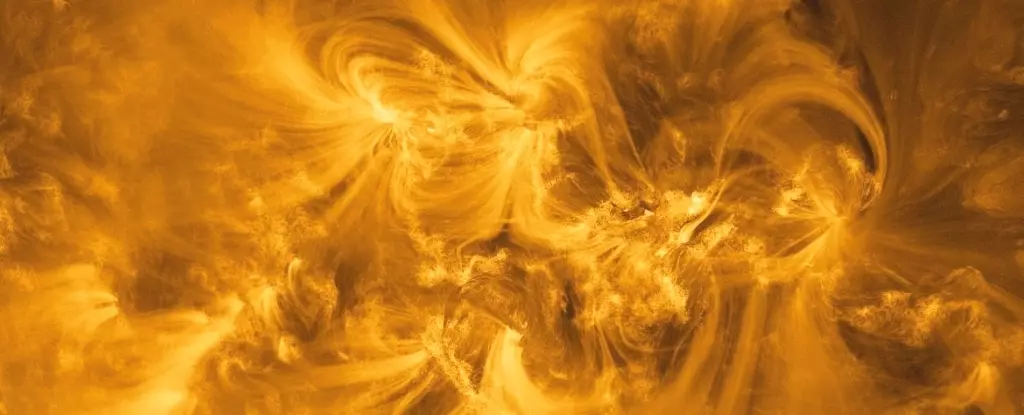In the ever-expanding quest to unlock the mysteries of our solar system, the European Space Agency (ESA) and NASA’s Solar Orbiter has emerged as a pioneering mission that reached a remarkable milestone in our understanding of the Sun. Launched in 2020, this innovative spacecraft was designed to study the intricate and often mystifying behaviors of our star, situated over 74 million kilometers away. The distances involved in solar observation may seem staggering, but they pale in comparison to the scale of our own Sun, which continues to exert a profound influence on the entire solar system.
The Solar Orbiter’s mission is multifaceted, encompassing a range of scientific objectives that delve into the Sun’s dynamic activity. One of the primary aims is to investigate the mechanisms behind the solar wind—a continuous stream of charged particles emitted by the Sun. Understanding this phenomenon is crucial, as it not only shapes the solar system but also has direct implications for Earth’s space weather, impacting satellite operations and communication.
In addition to studying solar wind, the Solar Orbiter is also focused on unraveling the complexities of the Sun’s magnetic field and the dramatic eruptions that occur on its surface, such as solar flares and coronal mass ejections. These events contribute to space weather impacts on Earth, making it imperative to gain insights into their origins and behaviors. High-resolution imaging is a pivotal component of this mission, as the Solar Orbiter carries advanced instrumentation capable of observing the Sun across multiple wavelengths.
Recently, four extraordinary images captured by the Solar Orbiter have been released, representing a significant leap in our ability to visualize our star in unprecedented detail. The imagery reveals the Sun’s surface across various spectrums—visible light, magnetic configurations, plasma movement, and ultraviolet emissions. This multi-faceted approach allows scientists to appreciate the intricacies of the Sun’s activity and its intricate layering.
The images, obtained in March 2023, were produced using two key instruments: the Polarimetric and Helioseismic Imager (PHI) and the Extreme Ultraviolet Imager (EUI). Each image is a composite, meticulously constructed from 25 individual frames, collectively marking a new pinnacle in our imaging capabilities of the Sun. According to Daniel Müller, the Project Scientist for Solar Orbiter, these high-resolution maps offer a detailed representation of the magnetic field and plasma flows on the Sun’s surface, enhancing our comprehension of its fundamental dynamics.
Among the standout features of the newly released images is their ability to depict the Sun’s magnetic field in extraordinary detail. These magnetic maps provide a window into the forces at play on the Sun’s surface, showcasing interactions that may lead to significant solar phenomena. The PHI instrument enables scientists to track the movements of plasma, distinguish between areas where material is being drawn toward the spacecraft (indicated in blue) and those from which it is receding (shown in red).
This real-time visualization is bolstered by observations from the EUI, which capture the dazzling ultraviolet emissions of superheated plasma extending from sunspots, offering a glimpse into the Sun’s energetic atmosphere. Together, these images not only contribute to our understanding of the Sun’s surface and its magnetic architecture but also lay the groundwork for understanding conditions in the solar corona—the region that directly affects space weather.
The Solar Orbiter’s groundbreaking imagery and insights encourage one to reflect on the profound nature of space exploration. As we gaze at the stunning views captured by this technology, we are compelled to think beyond our terrestrial existence and ponder our place in the cosmos. The artistic quality of these images serves as a reminder of the beauty of the universe and highlights our intent to explore and comprehend the wonders of nature. Each new discovery not only enriches scientific knowledge but also ignites a sense of wonder about the vastness and interconnectedness of life and existence. As this mission unfolds, we are increasingly drawn into a narrative of exploration that continuously redefines our understanding of the very forces that govern our universe.

